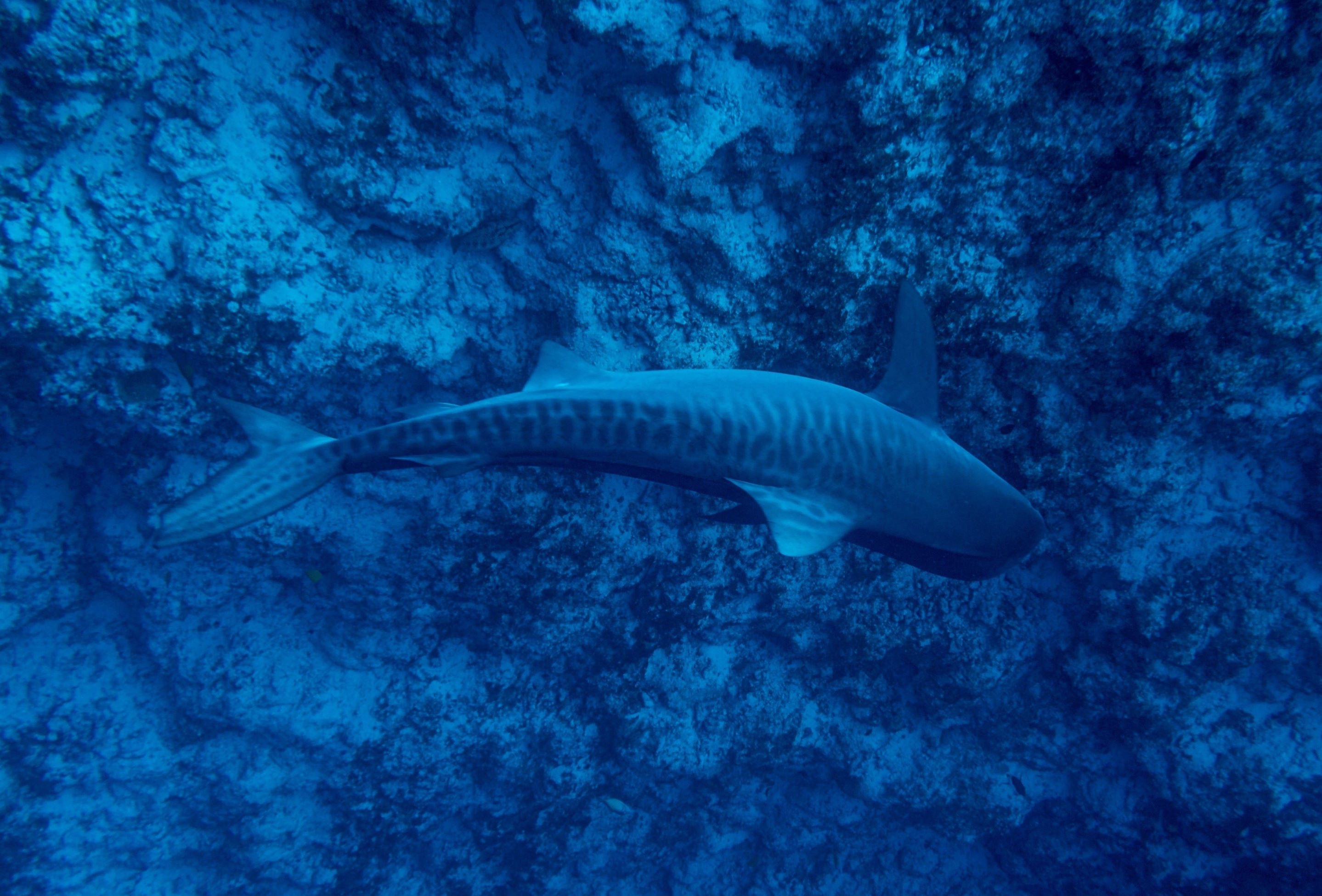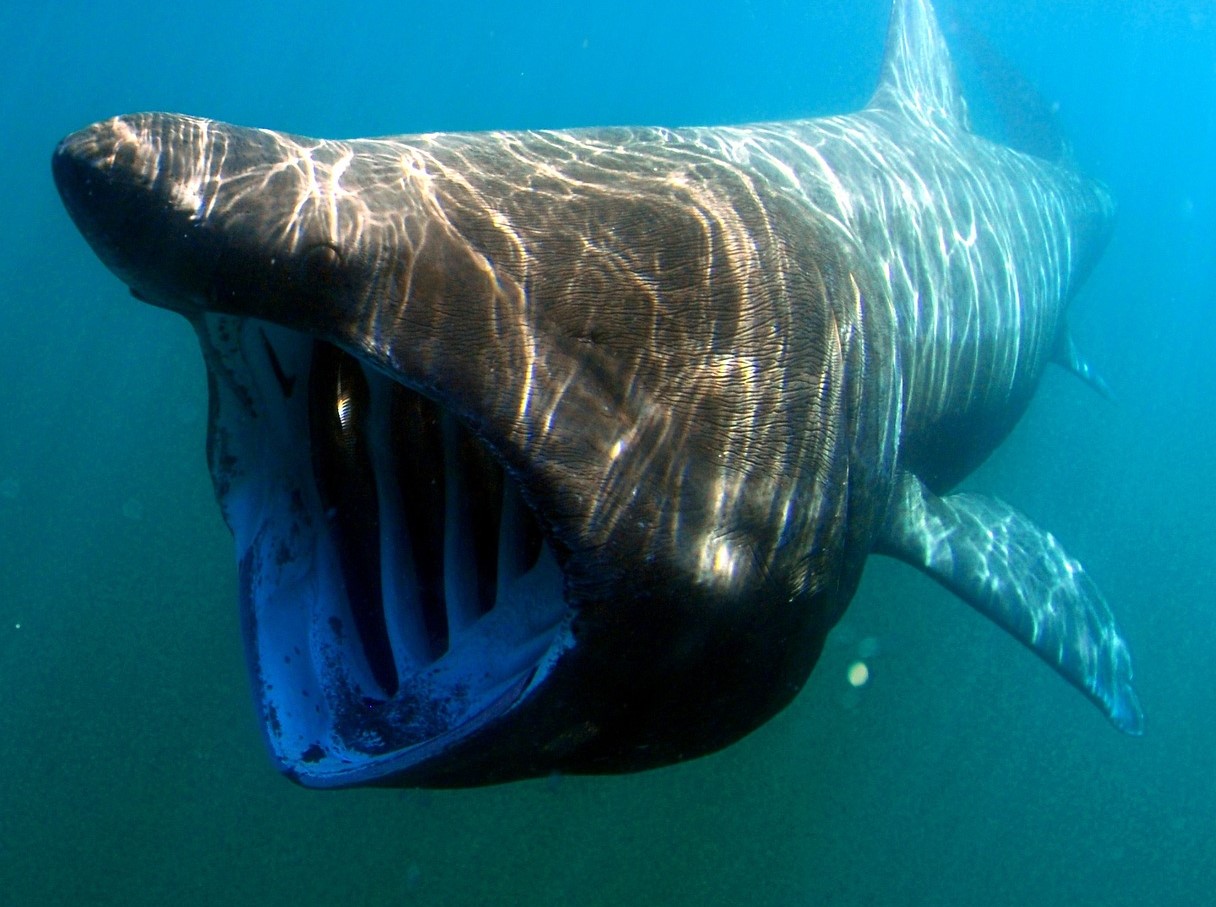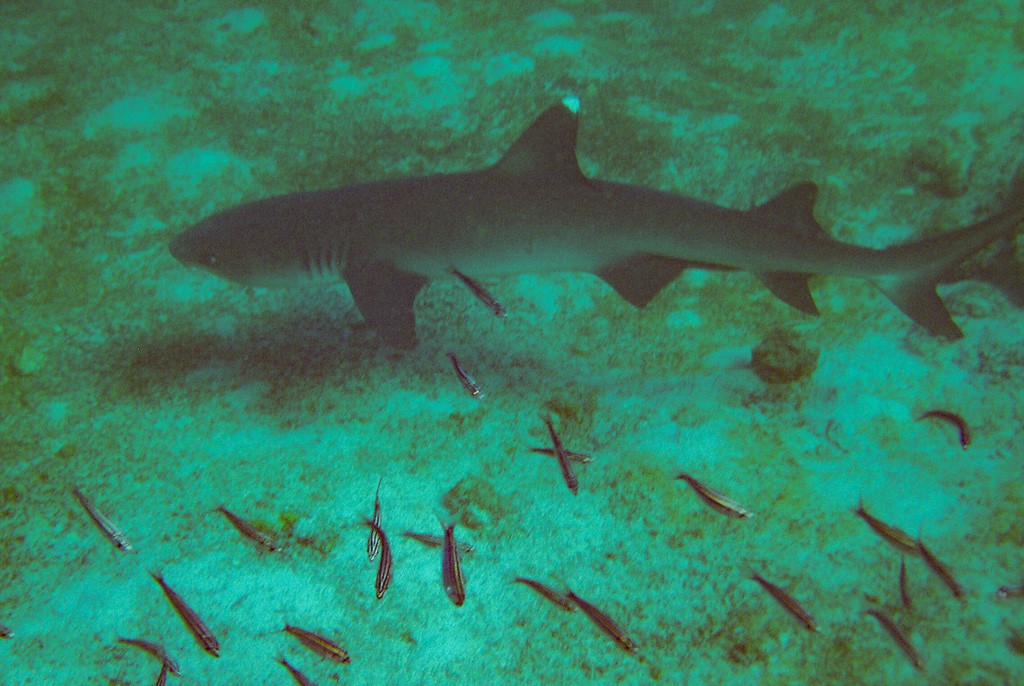The white shark is considered the most dangerous shark to humans, although it actually much prefers a wide range of other prey such as turtles, seals or dolphins. It is in fact a very skilled hunter and swimmer, equipped with large, serrated teeth, which puts it at the top of the marine food chain surpassing even other sharks.
Something about them...
Sharks are a superorder of cartilaginous predator fish of varying sizes that live predominantly in warmer marine
waters.
There are many species of sharks, but all have common characteristics:
Anatomy
- the size varies, but the body always has an elongated and tapered shape that allows swimming
- the skeleton consists mostly of light and flexible cartilage, which gives agility
- fins, which stabilize and enable the animal to swim, are rigid, supported by cartilaginous rods and protein fibers. They are of five different types: pectoral, pelvic (two), dorsal (one or two), caudal, and anal (one)
- teeth are arranged in parallel rows, and behind the first line, several lines of spare teeth continuously develop throughout the shark's life, every 10 to 14 days
- scales, of the same tissue as the teeth, increase in number rather than size as the shark grows, and have a regular arrangement that reduces friction with the water
- the gills, used for breathing, are much more numerous than those of the common fish (5/7 slits on each side)
Senses
- smell is a very strong sense in sharks: some species can detect one part per million of blood in seawater. It is mainly exploited for distant prey
- vision is similar to that of other vertebrates, with the difference being a membrane behind the retina that improves visibility underwater
- hearing also appears to be very fine in these animals. On either side of the head are two openings leading to the inner ear
- some receptors connected to the pores of the snout allow the shark to pick up magnetic and electric fields. It is a very fine sense in these animals, used from short distances compared to the other senses
- the lateral line is a sense that allows it to recognize movements and vibrations in the water, composed of a series of receptor organs arranged along the sides of the animal
Lifespan
It varies from species to species, but on average a shark lives between 20 and 30 years.
Reproduction
The process of shark reproduction occurs sexually, when the male shark fertilizes the female by means of one of two hemipenes. This occurrence differs from species to species, but often the male bites the female to retain or court her. Unlike other fish, sharks do not produce a large number of offspring, but hover around a dozen. Depending on the species, the shark can be oviparous, viviparous or ovoviviparous.
Classification
Sharks are divided into eight orders, into which more than 500 different species are divided:
- Carcharhiniformes (requiem sharks, eight families)
- Heterodontiformes (bullhead sharks, one family)
- Hexanchiformes (two families)
- Lamniformes (seven families)
- Orectolobiformes (barbeled sharks, seven families)
- Squaliiformes (sharks, seven families)
- Squatiniformes (angel sharks, one family)
- Pristiophoridae (sawfish; one family)










